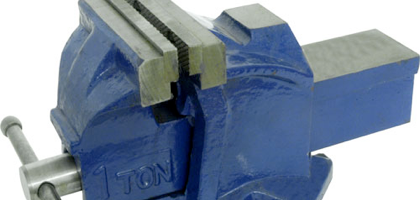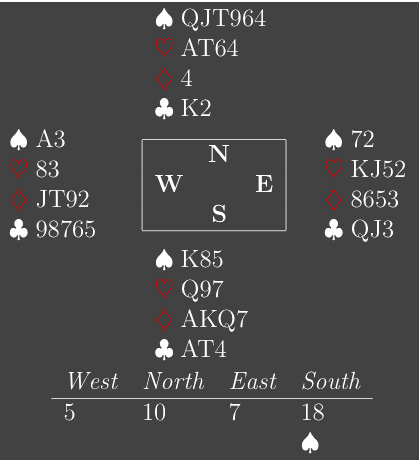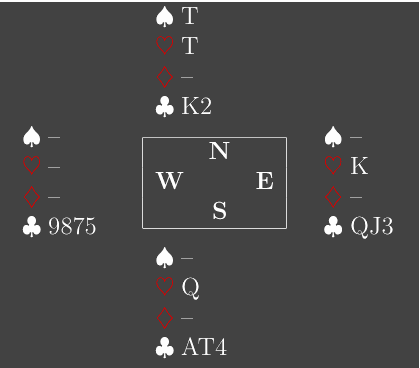
In the advisory council of the Dutch Bridge Federation, we have been discussing how to attract new players. One of our ideas is to organize low-level entry events, where non-players can see what this game is all about: 5 minutes explanation, play cards, have fun.
I spent Christmas at my parents-in-law. After dinner, the conversation somehow turns to bridge. So what is this game all about, they ask. Well, time to put the above in practice and here is the 5 minute guide to playing bridge for newbies. The players had some experience with card-games, such as wiezen or the Belgium variation of whist. That helps, but is not necessary.
Get a deck of cards, explain that there are 2 partnerships playing together. Deal the cards, tell players to sort their hand and explain how to count your points. We then start the “auction”: all players announce their point count, the side holding most becomes declarer and dummy. Dummy puts down his cards and declarer selects a suit with 8 cards or more as trumps. With 25 points, declarer has to make game (9 tricks at NT, 10 with a trump suit), with less a partial (at least 7 tricks), with 33 or more a slam.
Now play starts. Explain who leads first, how playing the dummy works, who wins the trick and who gets to lead to the next trick. That is about 5 minutes and the first hand can be played. Don’t bother with any strategy yet, just play a few hands to learn the mechanics of the game. Finally, after each hand, explain the scoring: 100 for making a partial, 400 for game, 1000 for slam, undertricks 50 each.
After a few hands, you can give some general advice on play: a trump suit must have 8 cards or more, lead the top of a sequence, third hand high, draw trumps but don’t make it too complicated. The goal is to get an idea of what the game is all about.
And this worked. We opened another bottle of wine and had fun all evening. Of course, the question will be asked if this is all there is to learn about the game. The answer to that one is simple, no, there is a lot more to learn but as in any sport, you start simple and learn as you go along. My favorite explanation is the case of Lorenzo Lauria. He started to play while in the army in the early 1970’s, he lost and decided to avoid that by becoming the best bridge player in the world. It only took him 35 years, but all the time, he enjoyed playing. Pick an example from any other sport if that helps.
Obviously, this game isn’t that interesting for more experienced players, but even with this limited explanation, there are still interesting hands. Take this one:

The “auction” followed the principles above. All 4 players announce their point count. NS have a majority and south becomes declarer. He obviously picks spades as trumps and, with more than 25 points, he is supposed to make 10 tricks or game. That is, of course, easy with 11 winners from top. Can you make an extra trick?
The opening lead is the ♦J won by south with the ♦Q. A spade is won by the ace and a heart is returned.
As the point count is known from the auction and west has shown all his high cards, there is little to be gained by ducking this, so win with the ace. All other high cards can be placed as well. Making 12 tricks is now easy: draw trumps, cash the top diamonds and play more trumps, leading to this end position:

On the last spade, east, my mother in law has the dubious honor of being caught in a squeeze for the first time in her life. She obviously didn’t know what a squeeze is but sits there with a painful look while deciding which card to play. I tell her that she holds ♥K and the ♣QJ and there is little she can do. “Did you look at my cards?”, she asks.
